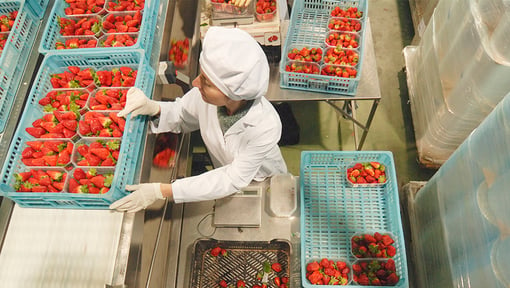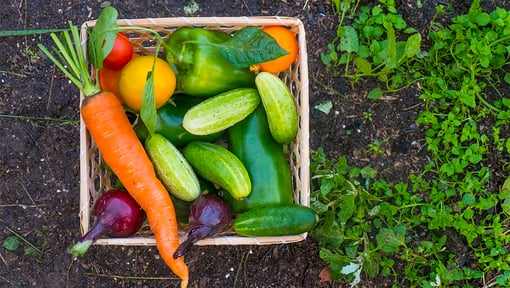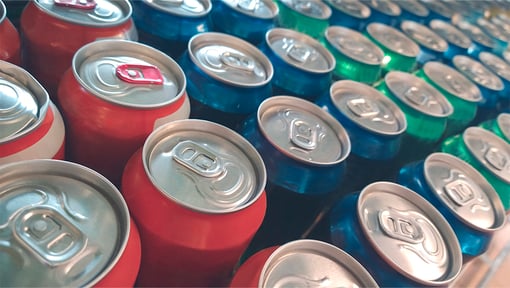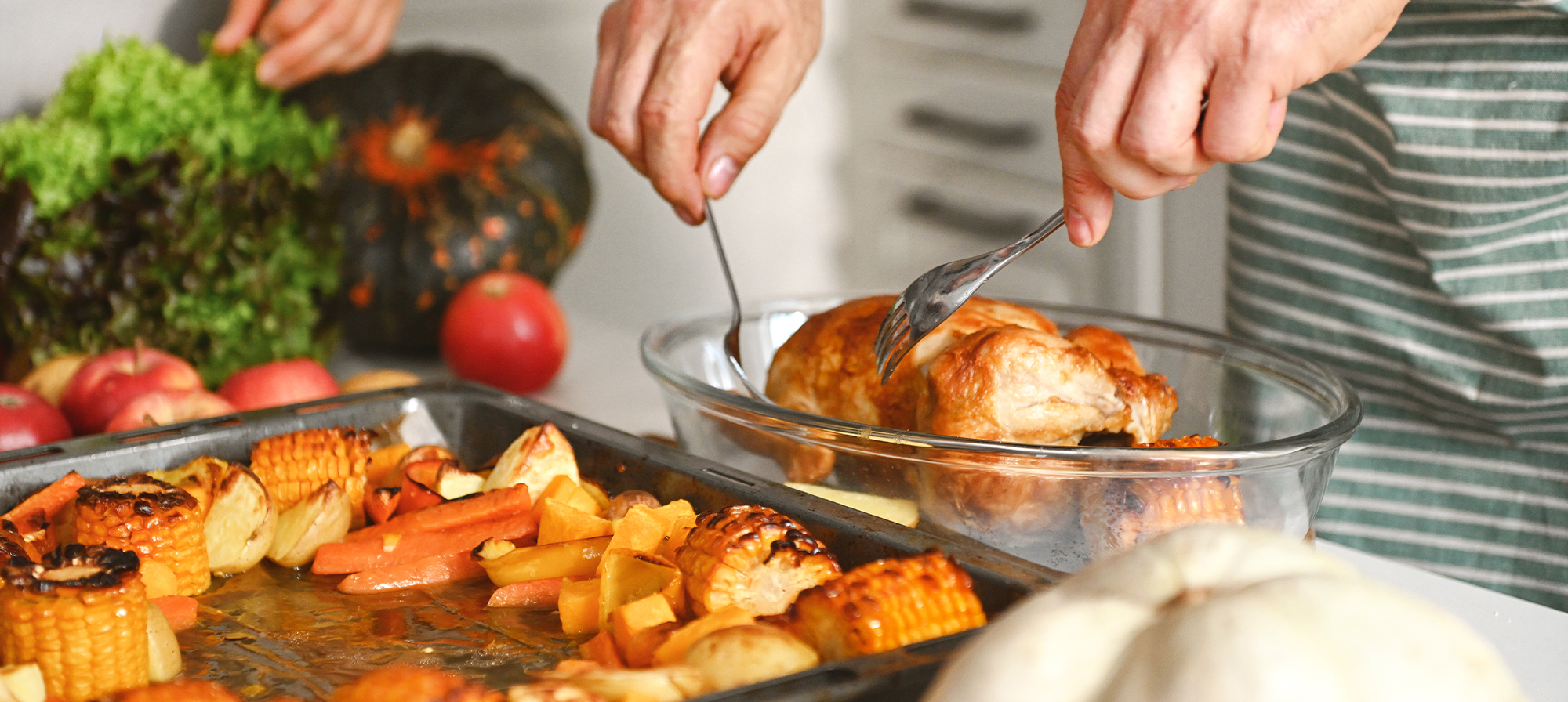Ultra-processed foods bear little resemblance to the whole foods from which they’re made. Steering clear of these foods is vital for your health.
If you have a hard time making sense of which foods are healthy and which ones are not, you’re not alone. It seems to get harder and harder every year.
You’ve probably been told since you were a kid not to eat “junk food,” but what exactly constitutes junk food? These days, the term “processed foods” has become a catch-all for what’s considered “junk food.” But even that’s not a terribly descriptive or accurate term. Because nearly all foods are processed in one way or another—even some healthy foods.

The degree of processing matters
Consider the different kinds of processing that corn might go through. One crop may be picked, shucked, sealed in plastic wrap, and sold in a grocery store. By definition, this corn is still “processed.” But nothing has been added to the food. And you wouldn’t consider it “junk food.”
Now, compare that to a crop of corn that’s been picked, shucked, dehydrated, and refined. Then pureed with dyes, preservatives, sodium, sweeteners, and other difficult-to-pronounce additives.
Next? It’s molded into a new shape and sent through a blast furnace before being vacuum sealed in a plastic bag and transported across two continents. The final destination for this bag of corn chips? Quite possibly a gas station vending machine for who knows how long.
This is a clear example of an “ultra-processed” food. Can you guess which of the two is more nutritious?

The convenience of ultra-processed food
While that example may seem extreme, this kind of food processing is not uncommon. You might even eat more ultra-processed foods than you realize. In fact, nearly 60 percent of all calories consumed by American adults are in the form of ultra-processed foods. Many breakfast cereals, frozen dinners, energy bars, and sweetened drinks are just a few examples.
Unfortunately, while ultra-processed foods are convenient (and often satisfying—potato chips, frozen pizza, and candy are popular for a reason), it comes at a cost. Americans have seen a rise in obesity, type 2 diabetes, heart disease, and other health conditions. Much of this is linked to the increase in ultra-processed foods in the diet.

What is considered processed food?
Foods that are picked, washed, and packaged are still considered “processed.” But that’s minimal processing. It doesn’t mean those foods are necessarily unhealthy. Humans have processed their food in some form or another for thousands of years. And there are good reasons for this.
Processing kept food safe to eat for longer periods of time. Preserving foods through drying, milling, curing, brining, smoking, and salting are all different ways of processing food. This helped ensure people had food to eat even in lean times.
Processing food was—and remains—an important way to provide food security for much of the world. In more recent times, processing methods like canning and jarring greatly extended the shelf life of foods. The ability to store and preserve food at its nutritional peak for long periods of time meant that you could eat a greater variety of food throughout the year.
This concept is taken for granted today, but in the past, processing foods was a big deal. Foods not only lasted longer, but they were also much easier to transport all over the world, without the need for refrigeration.
It’s this convenience that helped push processing methods forward. As the world came to enjoy the benefits of processed food, food production became a big business. Newer and more elaborate ways of processing cropped up. Food, as we know it, began to undergo a radical change.  Enter the ultra-processed age
Enter the ultra-processed age
It’s no easy task to provide a constant supply of food for hundreds of millions of Americans every day (let alone the billions of people throughout the world). Food production is one of the most important and massive industries in the world.
During the 20th century, food manufacturers began to experiment with more high-tech ways to extend a food’s shelf life. Scientists tinkered with artificial preservatives and flavors to create foods that not only lasted longer, but also had big flavor.
Along the way, some foods went through such dramatic processing that they held little resemblance to their original state. More times than not, this stripped out what made these foods healthy in the first place: their nutrients.
Take white bread, for example. Its main ingredient—enriched flour—is made from wheat grains stripped of bran and germ. While this makes for a lighter texture and longer shelf life, this process removes almost all the natural fiber, vitamins, and minerals found in whole wheat.
And yet, even though these foods have low nutritional value, they continue to grow more popular every year. A first step to reducing your intake of ultra-processed foods is to understand the different levels of processing.

Different stages of food processing
While it’s not always easy to classify every type of processing, it’s helpful to have an idea of the different stages of food processing and how each stage affects the nutritional value of the food.
Whole food and unprocessed
Unprocessed foods are, in essence, whole foods. They include the natural, edible parts of plants and animals. This might include fruits or vegetables that have not been altered in any way. Oats, buckwheat, or plain popcorn also fall within the unprocessed category. So do poultry, fish, nuts like almonds and walnuts, and tuna packed in water. Foods that you’ve grown from your own garden fall into this category as well. Compared to the other groups below, these foods have almost all of their nutrients retained, yet make up a small percentage of total foods consumed today.

Lightly processed
Minimally processed foods have been somewhat altered for easier storage, preparation, and eating. This does not greatly change the nutritional content of the food. Foods in this group may go through cleaning and removing inedible or unwanted parts, grinding, refrigeration, pasteurization, fermentation, freezing, or vacuum-packaging. This allows the food to have a longer shelf life.
Many fresh fruits, vegetables, whole grains, couscous, whole grain crackers (no trans fats), canned or jarred fruits, vegetable juices, canned vegetables, and fruit spread with 100% fruit as well as tofu, fresh deli meat, and nut butters fall into this category.

Processed
These include fruits canned or jarred in light syrup, frozen vegetables in butter or cream sauce, English muffins and pita bread, flour tortillas, veggie pasta, and ice cream.
All of these foods are processed by adding salt, oil, sugar, or other substances to foods. Processes include various preservation or cooking methods, and with breads and cheeses, non-alcoholic fermentation.
This type of processing makes food more durable or modifies or enhances its taste or texture. Most processed foods have 2 or 3 ingredients, but the main ingredient still tends to be recognizable. (Pickles, for instance, fall in this category.)

Ultra-processed
Ultra-processed foods and drinks are highly processed and preserved with sodium nitrates. At this stage, some of these foods are also unrecognizable from the whole foods from which they originated. These foods are often packed with added sugars or other sweeteners, dyes, and other additives that alter the food’s texture, taste, and appearance.
Potato chips, sausages, fruit flavored yogurts, and instant soups are just a small sampling of ultra-processed foods. Others include ice cream treats or novelties, artificially flavored dairy (chocolate milk, strawberry milk), cheese spreads, powdered creamer packages, and flavored coffee creamers.

Cutting back on ultra-processed foods
If you’re worried that your diet may be too dependent on ultra-processed foods, you can start by making small changes. You don’t have to avoid all processed foods. But try to tilt the scales in favor of fresh or minimally processed ingredients instead. Here’s how:
- Cook meals using whole foods more often. One major change in many Americans’ dietary patterns has been the decline of home-cooked meals from whole foods. But getting into the habit of cooking simple, healthy meals that include protein, whole grains, fresh veggies, and fruits can make a big difference in your overall health.
- Pay close attention to the ingredient label. Read the ingredients to see what is in the food. Do you see any artificial additives or other ingredients that you don’t recognize? If so, these are the foods you may want to avoid. Be wary of labels that make claims like “low fat,” “low sodium,” and/or “low calorie.” Some of these claims may make the food seem better for you than it is. And just because a package says “organic” or “natural” or even “healthy,” doesn’t necessarily mean it is healthy.
Look for snacks that contain whole grains, seeds, and nuts. Watch for foods with high levels of added sugars or sodium.

- Cut back on foods with a lot of preservatives. Artificial preservatives like sodium nitrate, sorbic acid, BHA, sodium benzoate, and trans fats provide no nutritional value. But they do help extend a food’s shelf life. Try to avoid foods with artificial flavorings and coloring.
- Buy local. Foods grown and raised locally tend to be less processed or may even be fully unprocessed. Look for farmers markets in your area to find the freshest produce.
- Consider the source. If a food has been so highly processed that you have trouble figuring out what it’s made of without reading the ingredients, it might be worth avoiding. But if you can easily recognize all the ingredients on a food package, it’s a safe bet it hasn’t been too heavily processed. Shorter ingredients lists are good to look for, too.

Other tips for making healthier food choices
Here are a few other ideas for swapping out ultra-processed foods with healthier choices:
- Choose breads made from whole grain flour as the first ingredient. Watch out for terms like “enriched wheat flour.” And keep an eye out for a long list of additives and preservatives. Also, keep in mind that “multi-grain” does not mean the same thing as whole grain. Look for “whole grain” on the label.
- Choose breakfast cereals made from whole grains and fewer added sugars. If your cereal feels too “plain,” doctor it up with some fresh fruit, nuts, and seeds.
- Cut back on takeout and frozen meals. Home cooked meals made with more fresh, whole foods will have fewer additives and preservatives, not to mention lower levels of sodium and sugar. They’ll also have more nutrients.
- Choose canned foods with only water and/or a small amount of salt added. These are okay to eat, so long as there are no additional syrups or other ingredients added.
- Choose fresh poultry and fish. Avoid breaded, pre-cooked cuts of meat that may have additional highly processed ingredients added.
- Look for whole grains instead of refined. Brown rice, farro, and quinoa are all better options than refined white rice. Pseudo grains are a great choice, too.
- When you do cook a healthy, wholesome meal, make a double batch! This way you’ll have a healthy lunch or dinner ready to go sometime later in the week. Put some in the freezer for another time, too.
- Drink water more often. A long list of drinks fall into the ultra-processed category. These tend to be overly packed with sugars and other artificial sweeteners and additives. So, try to get in the habit of drinking more water. If you want, you can infuse your water with fresh mint, citrus, a splash of fresh fruit juice, or even a piece of ginger.
The main takeaway
The building blocks of a healthy food plan start with focusing on the quality of the foods you eat. Every meal or snack you eat is an opportunity to choose whole foods or minimally-processed foods over ultra-processed foods. While current nutrition science cannot tell you that eating nutrient-dense foods will absolutely prevent disease, it might; and we do know that it doesn’t hurt. So, choose the foods most likely to limit your risk and enhance your overall health by avoiding ultra-processed foods.
Not a Silver&Fit® member? Learn more about everything the program has to offer, including more helpful healthy living tips like this, here on our website.
This information is not intended to take the place of regular medical care or advice. Please check with your doctor before using this information or beginning any self-care program. Images used for this article do not depict any members of the Silver&Fit Program.
References
Academy of Nutrition and Dietetics. (2023, January 30). Processed foods: A closer look. https://www.eatright.org/health/wellness/diet-trends/processed-foods-whats-ok-and-what-to-avoid
American Society for Nutrition. (2023, May 15). Using the Nova classification system to identify and estimate intake of ultraprocessed foods. https://nutrition.org/using-the-nova-classification-system-to-identify-and-estimate-intake-of-ultraprocessed-foods/
Bonaccio, M., Di Castelnuovo, A., Ruggiero, E., Costanzo, S., Grosso, G., De Curtis, A., Cerletti, C., Donati, M. B., de Gaetano, G., Iacoviello, L., & Moli-sani Study Investigators (2022). Joint association of food nutritional profile by Nutri-Score front-of-pack label and ultra-processed food intake with mortality: Moli-sani prospective cohort study. BMJ (Clinical research ed.), 378, e070688. https://doi.org/10.1136/bmj-2022-070688
Hall, K. D., Ayuketah, A., Brychta, R., Cai, H., Cassimatis, T., Chen, K. Y., Chung, S. T., Costa, E., Courville, A., Darcey, V., Fletcher, L. A., Forde, C. G., Gharib, A. M., Guo, J., Howard, R., Joseph, P. V., McGehee, S., Ouwerkerk, R., Raisinger, K., Rozga, I., & Zhou, M. (2019). Ultra-processed diets cause excess calorie intake and weight gain: An inpatient randomized controlled trial of ad libitum food intake. Cell metabolism, 30(1), 67–77.e3. https://doi.org/10.1016/j.cmet.2019.05.008
Huebbe, P., & Rimbach, G. (2020). Historical reflection of food processing and the role of legumes as part of a healthy balanced diet. Foods (Basel, Switzerland), 9(8), 1056. https://doi.org/10.3390/foods9081056
Martínez Steele, E., Baraldi, L. G., Louzada, M. L., Moubarac, J. C., Mozaffarian, D., & Monteiro, C. A. (2016). Ultra-processed foods and added sugars in the US diet: evidence from a nationally representative cross-sectional study. BMJ open, 6(3), e009892. https://doi.org/10.1136/bmjopen-2015-009892
Mayo Clinic Health System. (2022, March 21). What you should know about processed foods. https://www.mayoclinichealthsystem.org/hometown-health/speaking-of-health/processed-foods-what-you-should-know
Weaver, C. M., Dwyer, J., Fulgoni, V. L., 3rd, King, J. C., Leveille, G. A., MacDonald, R. S., Ordovas, J., & Schnakenberg, D. (2014). Processed foods: contributions to nutrition. The American journal of clinical nutrition, 99(6), 1525–1542. https://doi.org/10.3945/ajcn.114.089284
This article was written by Jason Nielsen, edited by Kimberley Reynolds, and clinically reviewed by Elizabeth Thompson, MPH, RDN.





